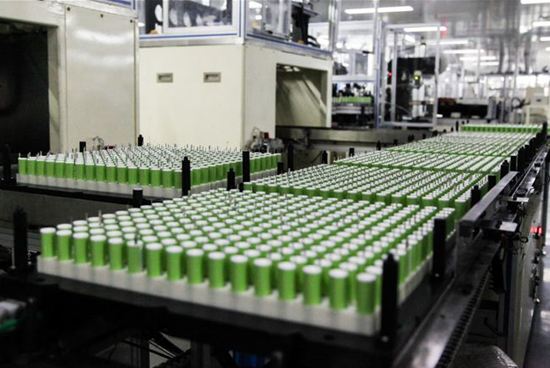You Should Know More About The Difference Between Lithium And Lithium Ion Batteries
Aug 28, 2019 Pageview:1153
Lithium based batteries have long been noted for their high energy density (that is the ability to store a large amount of energy in a very small space). Of course, you must have seen the name lithium thrown around on many electronic devices around you – since they are so widely employed.
Lithium based batteries were first proposed in the early 1900s and by the last score of the century, they were mass produced, being distributed primarily by Sony and Asahi Kasei. They then replaced nickel-cadmium batteries in portable electronics, offering more energy density, portability and life-span.
Lithium batteries and lithium-ion batteries provide a portable source of electricity and power and compared to their counterparts they are able to hold charges for much longer, store far more energy in very small containers. These attributes have rendered them so valuable and desirable in the modern world with digital and portable devices.
Are Lithium And lithium batteries The Same?
The shortest answer is no! While they both use a form of lithium in their electrolyte and electrodes they have very different composition and circuit arrangement. Lithium batteries are primary batteries, hence they cannot be re-charged or re-used. Once all the ions have been used up on the cathode, the process cannot be reversed. Lithium-ion batteries however, are specifically designed for their rechargeable properties and hence used in such devices. This property is allowed because the electrochemical process is reversible, making it possible to recharge and use them for years.
Differences Between Lithium And Lithium Based Batteries
Now let’s take a look at the differences between them in depth.
A look at their chemistry of these two batteries reveals a major difference between the cell of the primary batteries (lithium) and the secondary one (lithium-ion). Lithium batteries typically uses metallic lithium as the anode and employs a variety of chemical substance as the cathode – most notable of these is manganese dioxide, the electrolyte is made of a number of lithium salts in an organic solvent. On the other hand, lithium-ion battery uses carbon as its anode (usually in the form of graphite); a layered oxide of lithium as the cathode with an organic carbonate containing complexes of lithium – in a solid state.
Basically, a lithium battery only involves a cell – i.e. a single electrochemical unit, with an anode, cathode and an electrolyte. This architecture prevents them from being recharged, and once all the charges in a lithium battery have been used up, it cannot be re-used. Lithium-ion batteries however are secondary batteries involve many of such cells complexly put together in a closed and regulated circuit. Translating to the fact that lithium-ion batteries can be recharged and res-used several hundreds of times before eventually running out
Lithium-ion batteries (also written as Li-ion batteries), while rechargeable lose to lithium batteries in terms of their energy density, shelf life and affordability. The former is highly unstable and uses complex compounds has its cathode. This reduces the ionic properties of its lithium, rendering it with a lesser capacity to store charges. These also mean that lithium-ion batteries are more expensive to produce. Due largely to the involvement of several different complex compounds and the delicate though complex manner with which the circuit is to be assembled, else, risking an explosion. Lithium-ion batteries also lose their viability when unused for a few years – within three years. Lithium batteries remain full capacity for several years when left unused.
Li-ion batteries are a crucial source of power to several varieties of devices and instruments. Mobile and portable devices such as our cell phones, laptops, tablets, cameras, and game consoles are mostly powered by lithium ion batteries. Its high energy density and low self-discharge rate is to be mainly credited for this preference. And more to these, power tools such as electronic saws, cordless drills and a number of rechargeable gardening tools and devices are powered by lithium-ion batteries. Recently, the use of lithium-ion batteries has gain preference in the electric vehicle industry with many such vehicles powered by a number small battery in a parallel circuit.
Single use lithium batteries also have important roles in our modern world, being used to power vital equipment built to last very long durations including many medical implants, especially pacemakers for the heart. Lithium ion batteries can also be used for several portable, wireless devices requiring large amount of energy to function, such devices like camcorders, clocks and digital cameras.
Lithium batteries are usually available in standard sizes such as AA, C and D cell sizes as most single-celled batteries are. However, the wide application that lithium-ion batteries are favored means you most likely will find them in varying shapes and sizes. Ranging from cylindrical forms, rectangular and many other forms to fit the particular devices, with which it is used in.
How To Use Lithium And Lithium-Ion Battery Properly
As discussed earlier, lithium based batteries are quite delicate and any mismanagement of the battery can lead to an explosion destroying your device and incurring harm to those within the vicinity. This calls for extra care when handling lithium and lithium ion batteries.
Parts of the allure of lithium and li-ion batteries are their ability to store charges for very long period of time, with minimal self-discharge rates. When you have a need to keep lithium based battery for a long duration, it is best to take it out of the said device and keep it in its original container. When it is a lithium-ion battery, endeavor to keep it at a full or partial charge to ensure it stays viable till when you need it.
In addition, general safety rules in using batteries must be strictly adhered to. These include:
· Keeping them in room temperature (between 25 and 27 degrees Celsius)
· Keeping them in a well ventilate and dry environment. This goes without saying, especially for lithium batteries as lithium very reactive metal and will instantly form a hydroxide (LiOH) when exposed to atmospheric moisture or water.
· Keeping them from direct sunlight
- Prev Article: 18650 Battery Insulator Ring-Battery Tool Analysis
- Next Article: Freezing Li-Ion Battery – How long can it run?
Leave Message
Hottest Categories
-
Hottest Industry News
-
Latest Industry News











